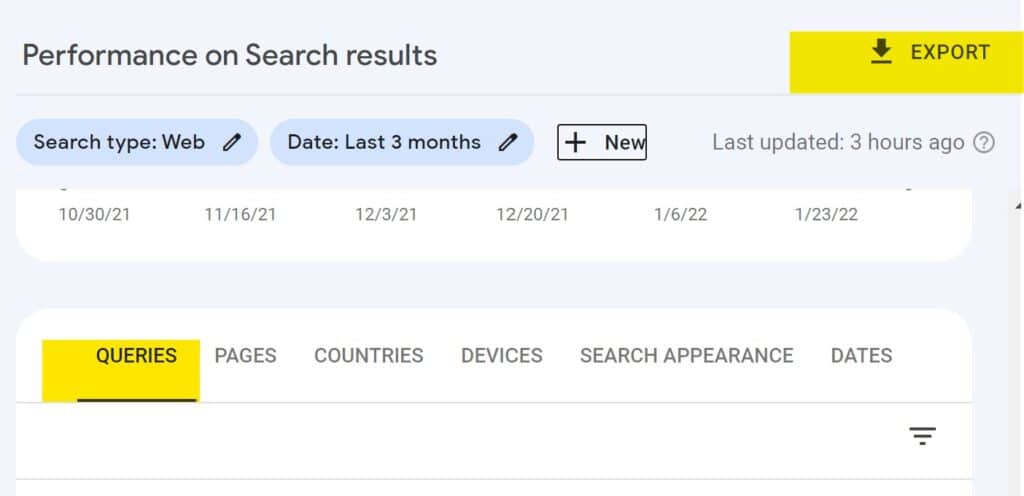Every good SEO campaign starts with keyword research. In fact, the right terms makes all the difference in success and failure of your campaigns. As an optimizer for many years, I can tell you that getting the words wrong can break a campaign.
Today, we’re going to talk about one of the basics of SEO. We’ll talk about what keyword research is, why you need it, how it ties into the success of your campaigns, and – most importantly – how to get it right.
What is a Keyword?
If there’s one overall mistake I think we marketers make when writing information-based articles for people to learn from, it’s making things too simplistic. In the effort of giving you, the reader, bite-sized, helpful information, we tend to skip over some of the details. Not that those details are unimportant; there’s just a lot of them. -And the details are important.
In short, a key word is simply a word that matches what the user is looking for. It all starts with user intent. However, when you’re looking for user intent, what are you looking for? Specific terms, or key words:
- How to SEO my site
- How can I SEO my site
- How does SEO work
- Where can I find an SEO professional
- What does SEO mean
- How much does SEO cost
In the examples above, we have the topic of SEO, but our key words – our research for user intent – are the words bolded. It uses semantics, context and user intent.
Semantics and context are basically the same thing: words related to the topic that help the user (or search engine) figure out what the page is about. Looking at user intent helps us answer the needs of the user and lets the user know we’re answering it.
Keywords have been around for a long time in marketing, way before digital. After reading this post, take a moment to peruse Google Image Search for old newspaper ads from the 19th century. You’ll see an ad proclaiming, “Don’t be bald!” Another says, “Dry goods! Dry goods sold here!” Yet another, and I kid you not, advertises “Cocaine toothache drops.” The first thing people see is the title, the big words in black – the keywords.
What is keyword research?
When it’s time to craft a marketing campaign or even just an article or article series, you want to make sure the terms you use:
- speak to your audience
- best represent your brand
- are recognizable
- are relevant to the campaign
At its heart, keyword research analyzes data to find search terms that meet the criteria above.
Why is keyword research important?
Content takes a lot to create, whether you’re writing blog posts, developing white papers or crafting training videos. While the purpose of that content may be to inform, or to lead people into the sales cycle, it first needs to be seen. You can create great content, but if it’s centered around terms your audience isn’t searching for, it’s not going to do you any good.
Take us, for example. We’re writing an article about how to perform keyword research. It’s helpful; it’s informative. We want it to rank high in the SERPs. -But what if no one was searching for the term? What if, instead, they were search for brand consulting? We’ve lost out on an opportunity, because no one is looking for our chosen terms.
Research, by itself, doesn’t guarantee ranking, but it does guarantee that you’re at least in the running for that coveted sweet spot: the top three search results.
What is your target market searching for? What terms do they use, and which terms do you want your brand to be known for? How much competition do you have for those terms, and can you beat them? Keyword research helps you answer these questions.
How to do keyword research: step by step.
Now you know what it is, and you know why keyword research is important, but how do you do it? What are the steps?
Not everybody builds their keyword list the same way. Optimizers may use different tools. However, the basics of keyword research are the same. You’ll need:
- Access to your Google Search Console.
- A free or paid keyword research tool (we use SEMRush, Ahrefs and RankTracker).
- Excel, Google Sheets or equivalent
Define your project.
Your project could be something small, like writing a blog post or whitepaper. It could also be defining a whole marketing campaign, or even the topic cluster for your site. In this first step, you want to think about:
- Who is my target market?
- What is the purpose of the content I’m creating? (To inform, to entice, to sell, etc.)
- Where does this content go in the buyer’s journey?
Why: Your target market, the purpose and the buyer’s journey all inform the research.
Brainstorm.
What terms can you think of that your target market might look for? Start broad and then narrow in to more specific terms. For example, if you were a veterinarian, you might start with vet, veterinarian, and pet doctor, but you could also narrow down to veterinarian clinic or emergency veterinarian service.
- Open a tab in your Sheets program. Name it “Seeds” and put your list in there.
Why: Brainstorming gives you a set of seed words to your keyword research with.
See what you’re already showing up for.
Unless you have a brand new site, chances are your site is already showing for some terms. The first place to find this data, if you have Google Data Properties attached to your site, is to go to Google Search Console.
- Choose “Queries”, then “Export”. In the screen shot below I have it set for 3 months, but you can pull a year’s worth of search times to get a more robust list of terms your site has been shown with. The tab you’re interested in is “Queries”.

Tools such as SEMRush should also provide you with a list. Export the list from your chosen tool. You should now have three tabs, as shown below.

Clean data.
GSC provides you with the terms you’re showing up in the SERPs for, but not necessarily the ones you should target. Before continuing on, you want to clean up the GSC data. Go through the list of terms Google Search Console provided and remove any that don’t fit with the purpose of your keyword research.
Consolidate “current” data.
Google Search Console can show you how many impressions your site made for a term, or an average position you ranked for a particular term in a space of time. However, it doesn’t tell you how much that term is searched by your target market. This is what your data tool, like SEMRush and Ahrefs – or even Google’s Keyword Tool – can tell you.
Also, it’s things like these that make optimizers Excel geeks. Formulas R Us!
In your GSC tab, start a new column. Label it “search volume”.

In the Volume column, add the formula:
=iferror(vlookup($A2,Tool!$A:$F,2,false),”-“)
- Replace “Tool” with the name of the tab that has your tool info.
- Replace “2” with the number of the column that holds volume data in the tool tab.
When you’re done, you should have a number where the “volume” column is. Do the same for keyword difficulty and competition, only change the “2” to reflect the column number.
Get more data.
Now that you have what you’re already showing for, it’s time to look at what other terms you can rank for.
Data tool
Open up your data tool and input your seed words. Each seed word should give you a list of additional terms to look at. You want to see search volume, competition, keyword difficulty, search trend, and intent (available in SEMRush).

Choose the terms that fit your current goal and export. Into another tab, “rank goal”.
Competitor research
What are your competitors ranking for? Competitors are often gold mines of information, especially when it comes to locating additional terms to target. Research your competitors with a tool like SEMRush, Ahrefs or Spyfu to gather another group of terms.
Review the master list
When all is said and done, you should now have a master list of at least a few hundred words. It’s time consuming to review the whole list, but this is where the real information is. Highlight terms that best fit your goal.
What criteria should you look for?
You could very well end up with a list of over 1,000 terms. So how do you filter that list?
Break the list into segments.
Low Hanging Fruit: You want low hanging fruit – which means keywords that may be longer phrases with less traffic. These words will be easy to rank for fairly quickly so you can use those as your starting point to drive some quick traffic to the site.
Short Tail: The second segment should be a list of words that are more competitive with more traffic. They’ll take longer to get ranking for, but have patience. Remember, while you’re building up to rank for the big ones, the low hanging fruit is doing its’ job and slowly building traffic to your site.
If your keywords are too generic and not targeted it will take a long time to get rankings and the traffic likely won’t convert as well. If you use keywords that are way too specific you won’t get enough traffic.
The solution? Use a 3 tiered approach.
Broad:
- Shorter phrases and single words
- Generic to your industry
- Lots of traffic
- Lower conversions
Focused:
- Slightly shorter phrases
- Higher traffic numbers
- Phrases are still focused on what you offer
Laser Focused: The Long Tail
- Longer and more targeted phrases
- Traffic numbers are smaller
- People are further along in the buying process so conversion rates are higher
The thought process behind “long tail keywords” is that the more detail someone types in, the more they know exactly what they want and the further along they are in the “buying” process.
For example if someone types “blue plates” they could want to buy them or they could want info or they could want to see pics – who knows. But if someone types in “Pfaltzgraff Blue dinner plates for 8” then they know exactly what they want and are more likely to buy.
Think about searcher intent.
Another thing to consider is the searcher’s intent. What phase of the buyer’s journey is this piece going into? Let’s look at this scenario to understand a little more:
- “buy MAC lip gloss ” – the searcher is looking to buy online
- “MAC lip gloss prices” – they are comparing prices and probably trying to decide if they will buy
- “MAC lip gloss” – they are interested in a specific brand
- “lip gloss” – interested in a type of product
You want to capture leads at the different phases, but understand you will convert more at the top level where they are further along in the buying process.
Your SEO strategy should include keywords from each of those “tiers” above.
Don’t forget you should also google your keywords and check out what sites come up on top. Check out what keywords they are using – you may get some ideas.
The sweet spot of keyword research.
Ultimately, once you segment and clean your list of terms, you want to see keywords and phrases that have high volume and low competition. This is the sweet spot of keyword research. The more targeted a phrase is and the less the competitors, the easier it is to rank for. However, in our saturated world, these terms are pretty hard to find and rank for.
Staying current.
I know in the marketing industry it seems like we have a new term pop up every month or so. If your industry is anything like ours, adding keyword research into your monthly or quarterly tasks is a good idea.
Check in with your data. Are people still coming in for XYZ term? Is your site showing up for new terms that you should consider? Are your competitors using other terms that you can capitalize on?
Final Thoughts
Keyword research and content development aren’t actions you do haphazardly. You want to outline your strategy and make sure you have a plan in place.
It’s time consuming, but don’t look at research as something you can just ignore. Throwing noodles at the wall or throwing the kitchen sink at anything never works. You can’t afford to take that attitude with your marketing efforts. Do your research; watch your competitors; listen to your target audience. The closer you are to providing the content they need, the better your traffic – and sales – will be.
Looking for that extra oomph for your campaign? Talk to Level343. We’ve been building campaigns since there was a platform to put them on.







































